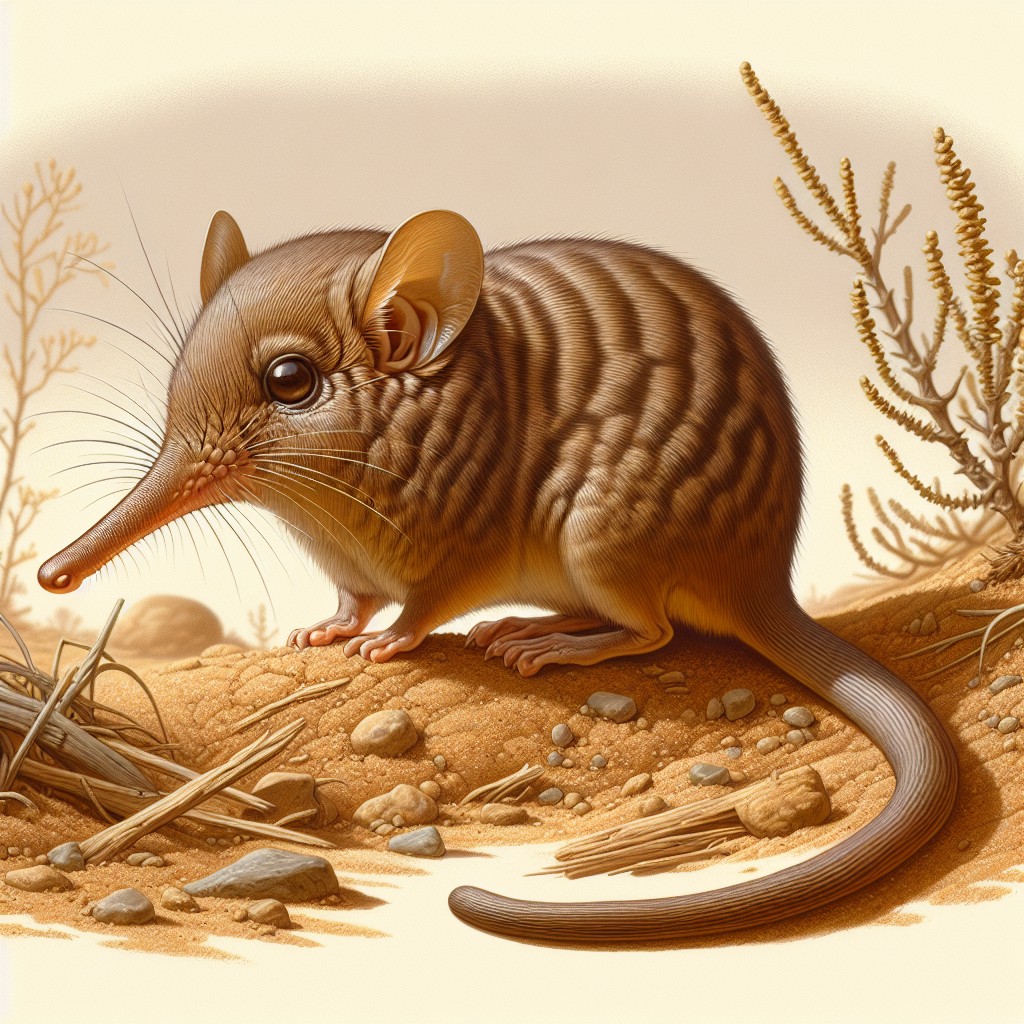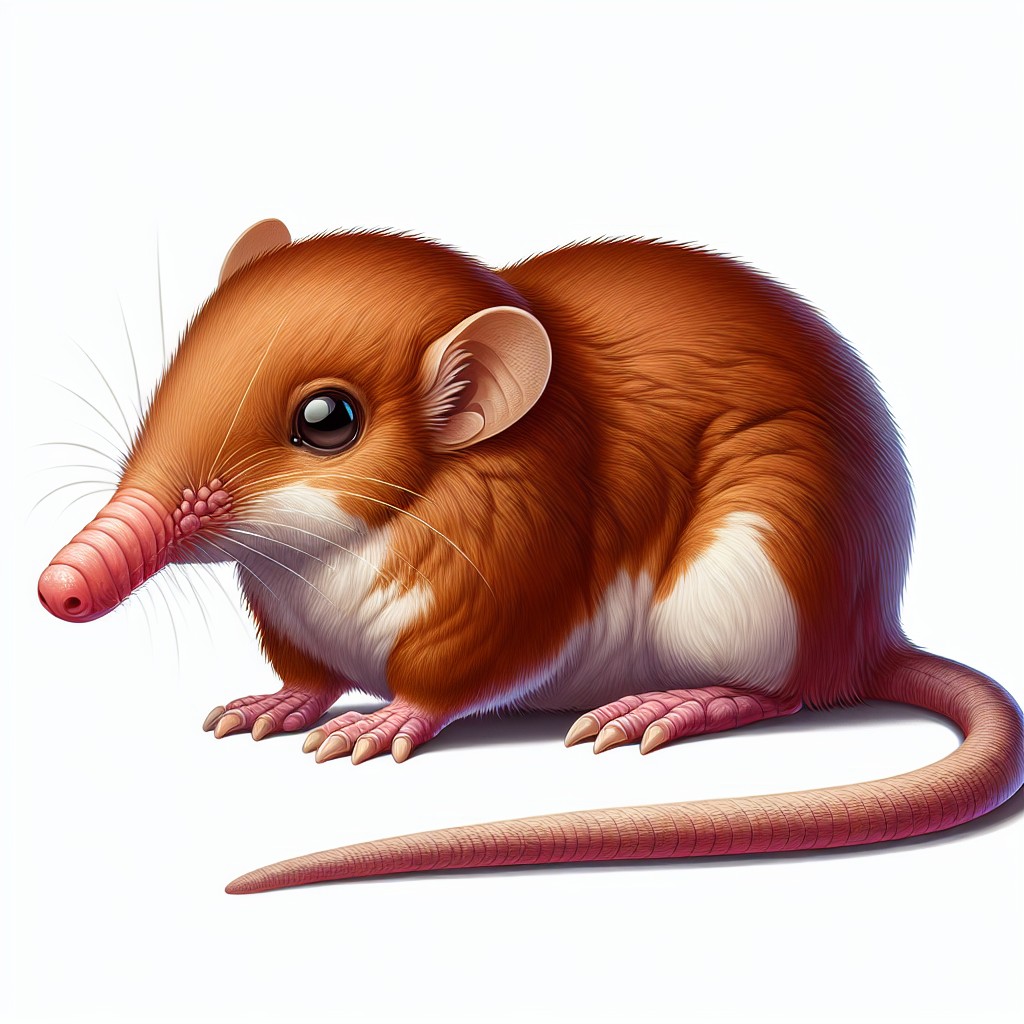
Elephant shrews, also known as sengis, are small mammals that belong to the order Macroscelidea. Despite their name, they are not shrews and are not closely related to elephants. Elephant shrews are found in Africa and are known for their unique characteristics and behaviours. They have a long nose, slender body, and long hind legs, which allow them to move quickly and efficiently through their habitats.
Elephant shrews are small in size, typically measuring between 10 to 30 centimeters in length, excluding their tails. They have a slender body with short fur that can range in color from brown to gray. One of the most distinctive features of elephant shrews is their long nose, which is flexible and can be moved in different directions. This long nose helps them in foraging for food and detecting predators.
Summary
- Elephant shrews are small, insect-eating mammals found in Africa.
- They have a distinctive long, flexible nose that they use to search for food.
- Elephant shrews live in a variety of habitats, from forests to deserts.
- Their diet consists mainly of insects, but they also eat fruits and seeds.
- Elephant shrews are solitary animals that communicate with each other through scent marking and vocalizations.
The Physical Characteristics of Elephant Shrews: From Nose to Tail.
Elephant shrews have a unique physical appearance that sets them apart from other small mammals. As mentioned earlier, their long nose is one of their most prominent features. This nose is not only used for foraging but also for communication and navigation. Elephant shrews have a keen sense of smell, which helps them locate food and detect potential threats.
In addition to their long nose, elephant shrews also have long hind legs that allow them to move quickly and efficiently through their habitats. These legs are adapted for running and jumping, enabling them to escape from predators or catch prey. Their hind legs also play a crucial role in maintaining balance while moving at high speeds.
The Habitat and Distribution of Elephant Shrews: Where in the World Can You Find Them?
Elephant shrews are primarily found in Africa, with the majority of species inhabiting the sub-Saharan region. They are typically found in a variety of habitats, including forests, savannas, and shrublands. However, they prefer areas with dense vegetation and cover, as this provides them with protection from predators and access to their preferred food sources.
The distribution of elephant shrews varies depending on the species. Some species are endemic to specific regions, while others have a wider distribution across multiple countries. For example, the Cape elephant shrew is found only in South Africa, while the Somali elephant shrew is found in Somalia, Djibouti, and Ethiopia.
The Diet of Elephant Shrews: What Do They Eat?
| Food Type | Percentage of Diet |
|---|---|
| Insects | 90% |
| Vegetation | 10% |
Elephant shrews are omnivorous animals, meaning they eat both plant matter and small invertebrates. Their diet primarily consists of insects, spiders, worms, and other small invertebrates that they find in their habitat. They use their long nose to sniff out potential food sources and then use their agile tongues to capture and consume their prey.
In addition to insects and invertebrates, elephant shrews also consume fruits, seeds, and other plant matter. They play an important role in seed dispersal as they consume fruits and then excrete the seeds in different locations. This helps with the regeneration of plants in their habitats.
The Behaviour of Elephant Shrews: How Do They Live and Interact?
Elephant shrews are primarily solitary animals, although some species may form small family groups. They are territorial creatures and mark their territories using scent glands located on their feet and around their anus. These scent markings help them communicate with other elephant shrews and establish boundaries.
Despite being solitary animals, elephant shrews do engage in social interactions with other members of their species. These interactions often occur during mating season or when defending territories. They communicate through vocalizations, scent marking, and physical displays such as tail flicking or hopping.
The Reproduction of Elephant Shrews: How Do They Reproduce and Raise Their Young?
Elephant shrews have a unique reproductive system compared to other mammals. Females have a specialized reproductive structure called a cloaca, which is used for both reproduction and waste elimination. Mating occurs during specific times of the year, and males compete for access to females.
After mating, the female elephant shrew will give birth to a litter of one to four young. The gestation period varies depending on the species but generally lasts around 60 days. The young are born fully furred and with their eyes open. They are able to move around shortly after birth and are relatively independent from their mother.
The Evolutionary History of Elephant Shrews: How Have They Adapted to Their Environment?
Elephant shrews have a long evolutionary history that dates back millions of years. Fossil evidence suggests that they have existed for over 50 million years, making them one of the oldest mammal groups in Africa. Over time, they have evolved various adaptations that have allowed them to thrive in their environments.
One of the key adaptations of elephant shrews is their long nose, which has evolved to be flexible and highly sensitive. This allows them to detect food sources and potential threats more efficiently. Their long hind legs are also an adaptation for their fast and agile movement, helping them escape from predators or catch prey.
The Conservation Status of Elephant Shrews: Are They Endangered?
Elephant shrews face various threats to their survival, including habitat loss, fragmentation, and climate change. As human populations expand and encroach upon their habitats, elephant shrews are losing their natural homes. Deforestation and land conversion for agriculture are major factors contributing to habitat loss.
Additionally, climate change poses a significant threat to elephant shrews as it alters their habitats and disrupts their food sources. Changes in temperature and rainfall patterns can affect the availability of insects and plants, which are essential for their survival.
Efforts are being made to protect elephant shrews and their habitats. Conservation organizations are working to raise awareness about the importance of these creatures and the need to preserve their habitats. Protected areas and national parks have been established to provide safe havens for elephant shrews and other wildlife.
The Cultural Significance of Elephant Shrews: How Have They Been Viewed Throughout History?
Elephant shrews have played a role in folklore and mythology in various cultures throughout history. In some African cultures, they are believed to possess magical powers or serve as messengers between the human world and the spirit world. They are often depicted in traditional artwork and stories.
In addition to their cultural significance, elephant shrews also have ecological importance. As seed dispersers, they contribute to the regeneration of plants in their habitats. They also serve as prey for larger predators, helping to maintain the balance of ecosystems.
The Future of Elephant Shrews: What Does the Future Hold for These Adorable Creatures?
The future of elephant shrews depends on our collective efforts to protect their habitats and address the threats they face. Conservation initiatives, such as habitat restoration and protected area management, are crucial for their survival. It is also important to raise awareness about these unique creatures and promote sustainable practices that minimize human impact on their habitats.
In conclusion, elephant shrews are fascinating creatures with unique characteristics and behaviours. Their long nose, slender body, and long hind legs make them well-adapted to their environments. They play important roles in ecosystems as seed dispersers and prey for larger predators. However, they face numerous threats, including habitat loss and climate change. It is essential that we take action to protect these adorable creatures and ensure their survival for future generations.
FAQs
What are Macroscelidea?
Macroscelidea is a taxonomic order of small mammals commonly known as elephant shrews or sengis. They are found in Africa and are not closely related to true shrews.
What do elephant shrews look like?
Elephant shrews have a long, pointed snout, which they use to search for insects and other small prey. They have large ears and eyes, and their hind legs are longer than their front legs. They range in size from 10 to 30 centimeters in length and weigh between 50 and 500 grams.
What is the habitat of elephant shrews?
Elephant shrews are found in a variety of habitats in Africa, including forests, savannas, and deserts. They prefer areas with dense vegetation and are often found near water sources.
What do elephant shrews eat?
Elephant shrews are insectivores and feed on a variety of insects, spiders, and other small invertebrates. They have a long, flexible tongue that they use to capture prey.
Are elephant shrews endangered?
Some species of elephant shrews are considered threatened or endangered due to habitat loss and fragmentation. However, many species are still widespread and not considered at risk.
What is the lifespan of elephant shrews?
The lifespan of elephant shrews in the wild is not well known, but they are thought to live for several years. In captivity, some species have been known to live up to 8 years.
Do elephant shrews have any predators?
Elephant shrews are preyed upon by a variety of predators, including birds of prey, snakes, and small carnivores such as mongooses and genets. They have several adaptations to help them avoid predators, including their speed and agility, and their ability to freeze in place to avoid detection.



